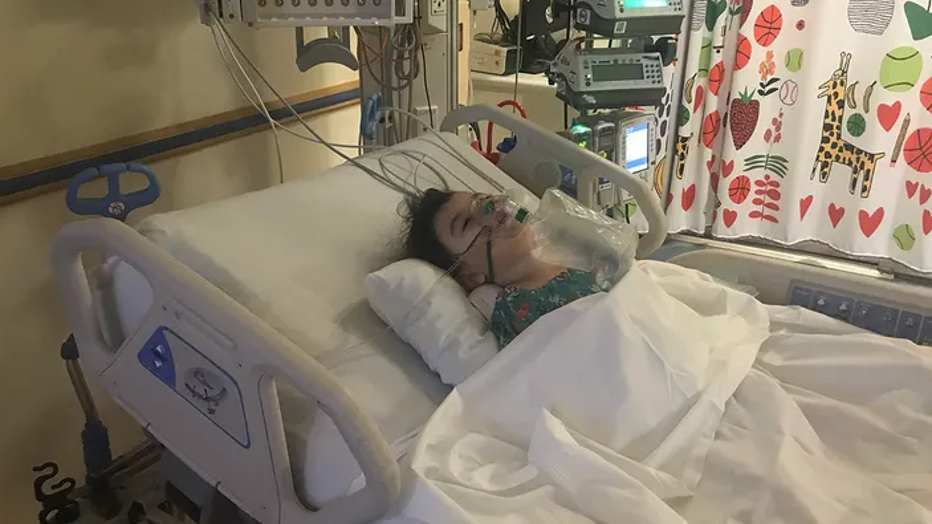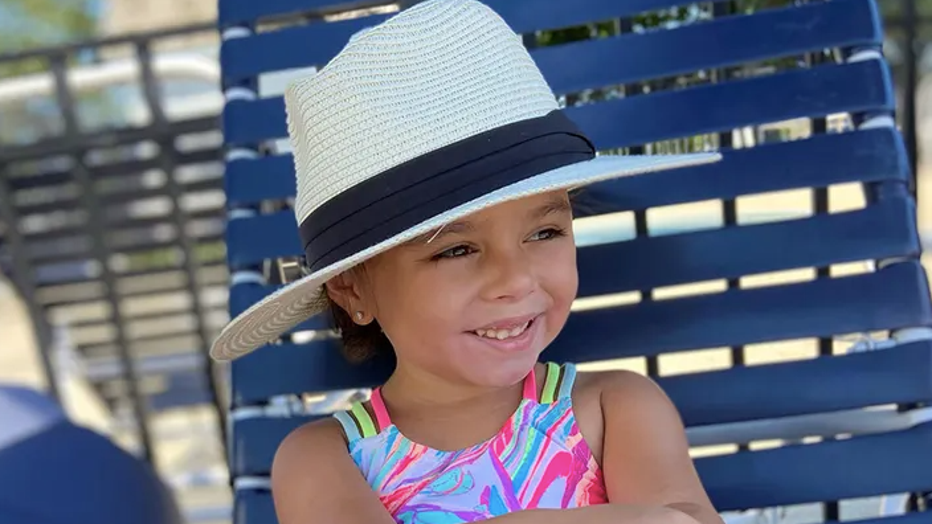National Epilepsy Awareness Month: How a Hail Mary diet helped our daughter

Doug Luzader, wife discuss daughter?s epilepsy diagnosis
FOX News Correspondent Doug Luzader and his wife discuss their daughter's epilepsy diagnosis on Good Day LA.
For a parent, there is no feeling like helplessness.
Early on Jan. 21, 2020, I was reporting live from Capitol Hill covering the impeachment trial of then President Donald Trump. At our home about a mile away, our 3-year-old daughter, Kyla, fell off her chair while having breakfast and began convulsing on the floor. My wife called 911 and then me. As I was rushing home, I watched a video feed from our security camera as paramedics went through the front door of our house. What followed was a journey my family could have never imagined. But we find ourselves emerging now on the other side with a message we feel we should share.
November is National Epilepsy Awareness Month. The Epilepsy Foundation will tell you that one out of 26 people in the United States will develop the disease at some point during their lifetime. That’s a startling figure, but it can also obscure an incredibly broad range of impacts. Most people with epilepsy lead typical and productive lives, and new generations of anti-seizure medications usually offer considerable control. Chief Justice John Roberts has battled seizures. So has Elton John. Some epilepsies, though, are much more complicated and serious. Intractable forms of the disease are highly resistant to medications and can lead to a lifetime of seizures.

Kyla Luzader in a hospital bed Feb. 9, 2020. (Doug Luzader/Fox News)
Kyla spent weeks in the hospital and the seizures rarely abated. Doctors refer to this as "explosive onset" and it is terrifying. Neurologists piled on one medication after another in a desperate attempt to calm her brain, but nothing worked. We ultimately returned home with a child we barely recognized. A preliminary diagnosis was devastating. Kyla’s seizures, now numbering nearly twenty a day, were unlikely to stop. Her suspected form of what’s known as a catastrophic epilepsy suggested steady cognitive decline that would result in a lifetime of dependence. Our lives would never be the same.
Each day we felt as if we were losing a bit of our daughter. When she wasn’t in a stupor or seizing, she showed flashes of intense anger. Kyla began to lose the abilities to speak or dress herself. She was suffering, and we were distraught.
Her medical team suggested something of a Hail Mary. The ketogenic diet, we learned, could often work when other approaches failed. We eagerly agreed, clinging to what appeared to be our little girl’s last chance. But in my mind, I was skeptical. Diet therapy. It sounded a little, well, flaky. I trusted science. And medicine. Could changing what our daughter ate really have much of an impact?
It has been known for thousands of years that fasting can help stave off seizures. There’s even a reference to it in the Bible. When your body begins to starve, it turns to the only source of energy it can find. Instead of powering your brain through carbohydrates or protein, you begin to burn your own stores of fat, producing a chemical residue called ketones. Researchers are still learning the "why" of all of this, but the transformation can be startling. While fasting is all well and good, one can only refuse food for so long. How do you sustain a state of ketosis? Doctors have known for more than a century that if you consume foods extremely high in fat, your body will continuously produce ketones, replicating a state of fasting. That’s the ketogenic diet.
For kids like Kyla, that means that 90 percent of all calories must come from fat. It is well beyond the now-popular keto diet that many healthy people follow to lose weight. Kyla would only be able to consume trace amounts of carbohydrates, and just enough protein to sustain growth. Her medical team, including a dietician, would keep tabs on her progress.
As we initiated the diet, we also sought a second opinion. We didn’t have to look far. Dr. Eric Kossoff at Johns Hopkins Children’s Center in Baltimore is a pediatric neurologist who specializes in epilepsy and is one of the world’s foremost experts on the ketogenic diet. Within minutes of meeting Kyla, he told us that she had Doose Syndrome (pronounced DOE-zuh). While the outcomes vary, many kids outgrow the disease and go on to lead normal lives. And the kicker: The most effective treatment for Doose may be keto.
Our kitchen became our pharmacy. We began to weigh everything Kyla ate. We followed special recipes using ingredients like almond flour, pili nuts, MCT oil and heavy cream. We poured over calculations, tracking every bite on a spreadsheet. Not a single gram of food would escape our attention. And as the weeks passed, Kyla began to improve. The seizures became less intense, less frequent. One day, about five months after starting the diet, the seizures stopped. Entirely. As we spent the next year fully weaning all of her medications, something ever more miraculous happened. The veils of seizures and side effects lifted, and the little girl we knew reemerged. Kyla began conversing again. She could once again identify numbers and letters. She had some catching up to do, but she would eventually return to school and rejoin her classmates. While the possibility of a relapse is very real, her progress has been beyond what we thought was possible.

Kyla Luzader is seen in the summer of 2021. (Doug Luzader/Fox News)
Keto doesn’t work for all kids with epilepsy, but many aren’t given the option. Even in our experience, some well-meaning doctors were skeptical. That’s changing. Charitable organizations like The Charlie Foundation advocate for the diet and provide support for families and health care providers, while others help spread the word in countries where there are few resources.
Kyla, now five, is in kindergarten and delighted to be back with her friends. She brings a special lunch to school each day, part of what she knows as her "magic diet." In coming months, we may begin to wean the diet to see if the underlying condition has passed. Magic, indeed.
We are beyond grateful that Kyla’s doctors were wise enough to pursue an age-old treatment for an illness that is far more common than we ever knew. Kyla’s fortitude through these challenges has been an inspiration.

